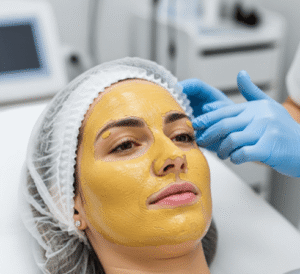Overview
Wrist pain is a common musculoskeletal complaint that can result from injury, overuse, inflammation, or underlying medical conditions. The wrist is a complex joint composed of bones, ligaments, tendons, nerves, and muscles, making it susceptible to various injuries and disorders.
➤ Wrist pain can be acute or chronic, mild or severe, and may affect daily activities like typing, lifting, or gripping.
➤ Common causes include sprains, fractures, tendonitis, carpal tunnel syndrome (CTS), and arthritis.
➤ In Korea, orthopedic and rehabilitation clinics offer diagnosis, imaging, physical therapy, and surgical interventions for wrist pain.
Key Facts
► Definition: Pain in the wrist region due to trauma, repetitive motion, inflammation, or systemic disease.
► Prevalence: Wrist pain affects all age groups; particularly common among office workers, athletes, and manual laborers.
► Associated symptoms: Swelling, stiffness, limited range of motion, numbness, tingling, or weakness.
► Risk factors: Repetitive movements, wrist injuries, aging, inflammatory conditions, or nerve compression.
► Treatment in Korea: Includes rest, splints, medications, physical therapy, injections, or surgery.
What Is Wrist Pain?
Wrist pain arises from irritation or injury to the bones (carpals), ligaments, tendons, joints, or nerves in the wrist.
➔ It can be localized (specific part of the wrist) or diffuse (generalized discomfort).
➔ Causes vary from acute trauma, such as fractures or sprains, to chronic conditions, including tendonitis or arthritis.
➔ Wrist pain may be mechanical, inflammatory, or neuropathic, depending on the underlying structure affected.
What Symptoms Are Related to Wrist Pain?
Symptoms vary depending on cause and severity:
→ Pain or tenderness in one or both wrists.
→ Swelling or redness, especially after injury or infection.
→ Stiffness or limited motion – difficulty bending, extending, or rotating the wrist.
→ Numbness, tingling, or burning sensation – often seen in carpal tunnel syndrome.
→ Weak grip strength or difficulty holding objects.
→ Clicking or popping sounds during movement.
→ Pain worsening with activity or repetitive motion.
Causes / Possible Causes of Wrist Pain
Trauma and Injury Causes
➤ Sprains and strains – Overstretching or tearing ligaments or tendons.
➤ Fractures – Commonly distal radius or scaphoid fractures from falls.
➤ Dislocations – Displacement of carpal bones due to trauma.
➤ Repetitive stress injuries – Overuse in typing, sports, or manual labor.
Inflammatory and Medical Causes
➔ Arthritis – Osteoarthritis or rheumatoid arthritis affecting wrist joints.
➔ Tendonitis / Tenosynovitis – Inflammation of tendons such as De Quervain’s tendonitis.
➔ Gout or pseudogout – Crystal deposition causing joint pain and swelling.
➔ Infections – Rare, but can cause pain, redness, and warmth.
Neurological Causes
→ Carpal tunnel syndrome (CTS) – Compression of the median nerve causing pain, numbness, and tingling.
→ Cubital tunnel syndrome or peripheral neuropathy – Can radiate pain to the wrist.
Other Contributing Factors
➤ Repetitive activities – Keyboarding, sports, or lifting.
➤ Poor ergonomics – Incorrect posture or workstation setup.
➤ Aging – Degenerative changes in joints or tendons.
When Should I See My Doctor?
Seek medical evaluation if:
➤ Pain is severe, persistent, or worsening over time.
➤ There is swelling, bruising, deformity, or inability to move the wrist.
➤ Symptoms include numbness, tingling, or weakness in the hand or fingers.
➤ Pain follows a traumatic injury like a fall or direct blow.
➤ Early assessment helps prevent chronic wrist dysfunction, nerve damage, or delayed fracture healing.
Care and Treatment
Lifestyle and Self-Care Measures
► Rest the wrist and avoid repetitive stress or heavy lifting.
► Apply ice packs for 15–20 minutes to reduce swelling after acute injury.
► Use wrist splints or braces to immobilize and support the joint.
► Practice gentle stretching and range-of-motion exercises after acute pain subsides.
► Maintain good ergonomics while typing or performing repetitive tasks.
Medical Treatments
➔ Medications – Pain relievers (acetaminophen, NSAIDs) for inflammation and discomfort.
➔ Corticosteroid injections – Reduce inflammation in tendons or joints.
➔ Physical therapy – Strengthening, mobility, and ergonomic training.
➔ Surgery – Required for severe fractures, ligament tears, or persistent carpal tunnel syndrome.
Procedural and Advanced Interventions
→ X-rays, MRI, or ultrasound – To evaluate fractures, tendon injuries, or joint abnormalities.
→ Electromyography (EMG) – To assess nerve compression in CTS.
→ Arthroscopy – Minimally invasive surgery for joint repair or removal of inflamed tissue.
Treatment Options in Korea
Diagnosis in Korea
➤ Orthopedic consultation with clinical evaluation and imaging.
➤ Assessment of nerve function for suspected CTS or neuropathic pain.
➤ Laboratory tests if inflammatory or systemic causes are suspected.
Non-Surgical Care
► Use of wrist splints, ergonomic adjustments, and anti-inflammatory medications.
► Physical therapy programs focusing on strengthening and mobility.
► Lifestyle modifications to prevent recurrent injuries or overuse.
Advanced Care
➔ Surgical intervention for fractures, tendon repairs, ligament reconstruction, or nerve decompression.
➔ Multidisciplinary management for complex wrist conditions, including rheumatology and rehabilitation specialists.
➔ Postoperative rehabilitation with therapy and monitoring for full recovery.
Rehabilitation and Lifestyle Support
→ Guidance on long-term wrist protection, ergonomic practices, and gradual return to activities.
→ Patient education on prevention of recurrent injuries and maintaining joint health.
→ Follow-up for persistent pain, chronic inflammation, or post-surgical care.
Korean clinics provide expert orthopedic care, advanced diagnostic tools, and tailored rehabilitation programs to ensure effective recovery and functional restoration for wrist pain.













